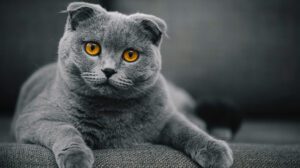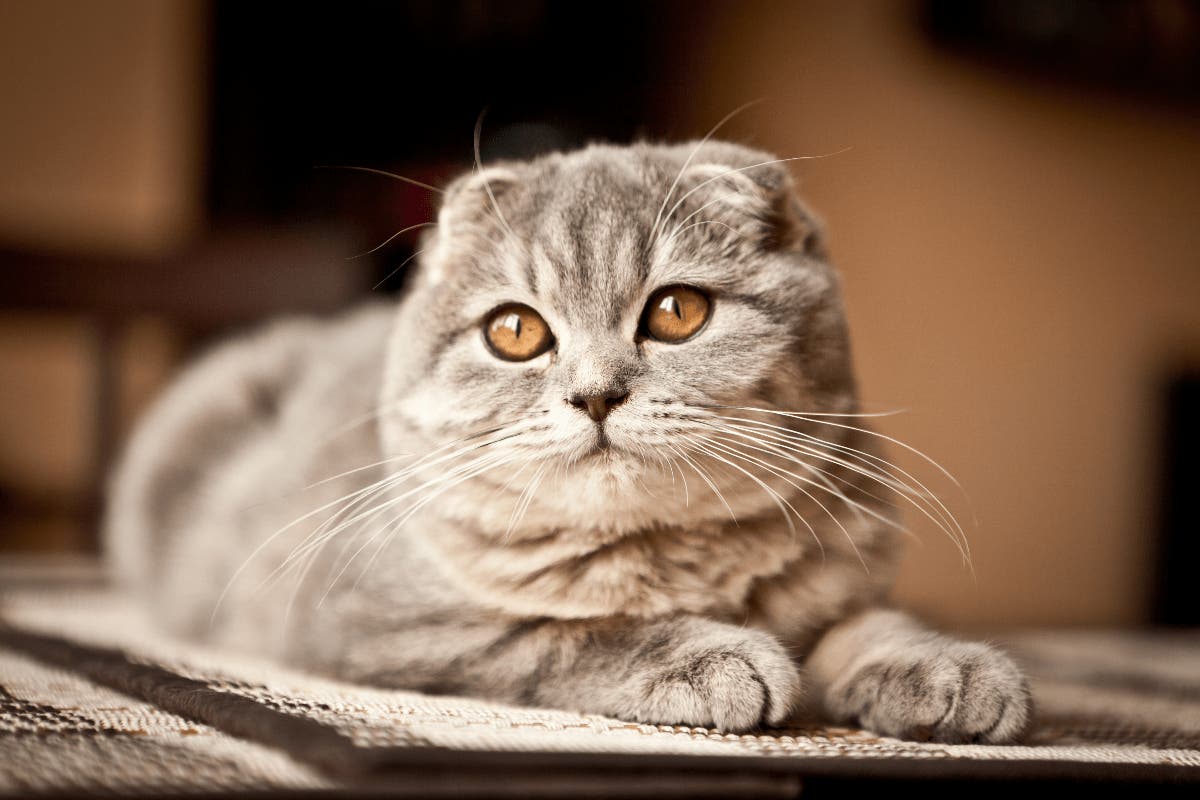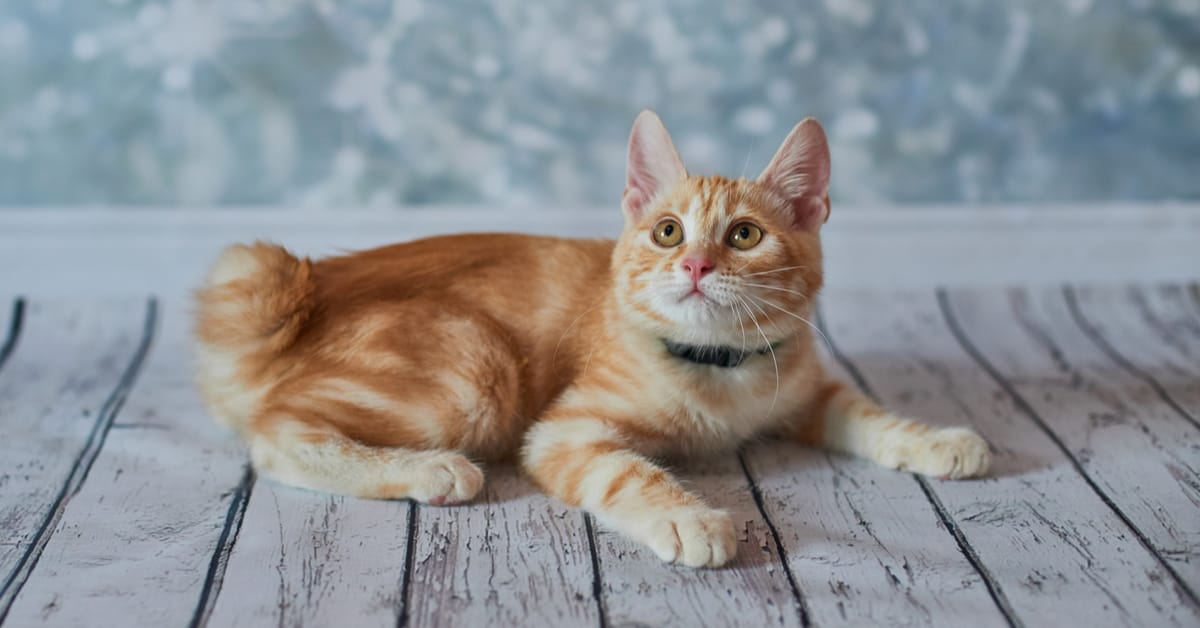Are you ready to embark on a fascinating journey into the enchanting world of Scottish Fold Cats? Get ready to discover the hidden secrets behind those adorable ears and unlock the captivating stories that lie within. By delving into this subject, you'll not only gain a deeper appreciation for these unique feline companions but also uncover the countless benefits they bring to our lives. Get ready to be whisked away into a world where cuteness knows no bounds!
Key Takeaways:
- Scottish Fold cats are known for their unique folded ears, which is caused by a genetic mutation.
- They have a sweet and gentle temperament, making them great companions for families and individuals alike.
- Their adorable appearance has made them popular on social media and in the world of cat lovers.
- Due to their folded ears, Scottish Folds may be prone to certain health issues related to their ear structure.
- It is important to choose a reputable breeder when getting a Scottish Fold cat to ensure their well-being and avoid supporting unethical breeding practices.
What makes Scottish Fold cats look different?
Scottish Fold cats are known for their unique appearance, particularly their folded ears. Unlike other cats whose ears stand upright, the cartilage in Scottish Folds' ears is folded forward, giving them a distinct and adorable look. This genetic mutation affects the way their ear cartilage develops, resulting in the signature fold.
In addition to their folded ears, Scottish Folds have round faces with large round eyes that give them an innocent and sweet expression. They also have a sturdy body with short legs and a thick coat that comes in various colors and patterns. All these features combined make Scottish Folds stand out from other cat breeds.
The Origin of Scottish Fold Cats
The story behind the name of Scottish Fold cats is quite interesting. The breed originated in Scotland in 1961 when a farmer named William Ross discovered a cat named Susie with unusual folded ears on his farm. He was fascinated by her unique feature and decided to breed her with other local cats to create more kittens with folded ears.
The breed gained popularity over time, and in 1974, it was officially recognized as a breed by cat registries. Today, Scottish Folds are cherished pets all around the world due to their distinctive appearance and charming personalities.
How do Scottish Fold cat ears look?
Scottish Fold cat ears are characterized by their distinctive fold or bend at the middle of the ear. Instead of standing upright like most cats' ears, they hang down slightly towards the front of their head. This fold can vary in degree from a single fold to a triple fold, which is considered ideal for show-quality Scottish Folds.
The shape of their folded ears often gives them an owl-like appearance, adding to their charm and uniqueness. However, not all Scottish Folds have folded ears. Some kittens in a Scottish Fold litter may have straight ears, and they are known as "straights." Straights can still carry the gene for folded ears and may produce folded-eared kittens if bred with another Scottish Fold.
Genetics Behind Scottish Fold Ears
The unique ear shape of Scottish Folds is caused by a natural genetic mutation. The gene responsible for the fold is dominant, meaning that if a cat inherits one copy of the gene from either parent, it will have folded ears. However, if a cat inherits two copies of the gene (one from each parent), it can lead to severe skeletal abnormalities and health issues.
Due to this potential risk, responsible breeders carefully select breeding pairs to ensure the well-being of their cats and prevent any health problems associated with double-folded ears. It's essential to prioritize the welfare of these adorable cats when considering breeding or adopting them.
Do Scottish Folds have folded ears from birth?
No, Scottish Folds do not have folded ears from birth. Kittens are born with straight ears, just like any other cat. The fold in their ears starts to develop at around 3-4 weeks old when their cartilage begins to harden. By the time they are about 8-12 weeks old, their ear fold becomes permanent and gives them their characteristic appearance.
It's important to note that not all kittens in a Scottish Fold litter will develop folded ears. Some may retain straight ears, while others may have varying degrees of folding. Breeders usually identify which kittens will have folded or straight ears as they grow older and can provide accurate information about each kitten's ear type.
Caring for Developing Ear Folds
During the period when a Scottish Fold kitten's ears are developing their fold, it's crucial to handle them gently and avoid excessive touching or folding of the ears. Rough handling can potentially damage the delicate cartilage and cause pain or discomfort for the kitten.
Regular veterinary check-ups are also important to ensure that the ear development is progressing normally and there are no signs of any issues. If any concerns arise, it's best to consult a veterinarian who is experienced with Scottish Folds.
Why do some people think Scottish Folds resemble owls because of their ears?
Many people find that Scottish Folds resemble owls because of their unique ear shape. The folded position of their ears can give them a slightly owl-like appearance, especially when they tilt their heads or have large round eyes like owls.
Owls are known for their ability to rotate their heads almost 360 degrees, which gives them excellent hearing and vision. While Scottish Folds cannot rotate their ears like owls, the similarity in appearance can make them appear wise and attentive, just like these nocturnal birds.
The Charming Expressions of Scottish Folds
The owl-like appearance of Scottish Folds adds to their charm and often captures the hearts of cat lovers. Their wide-set round eyes combined with the folded ears create an innocent and endearing expression that many find irresistible. It's no wonder why these adorable cats have become popular pets worldwide!
Are Scottish Folds friendly and sociable pets?
Absolutely! Scottish Folds are known for being friendly and sociable pets. They enjoy human companionship and love being part of a family. These cats have gentle personalities and tend to get along well with children, other pets, and even strangers.
Scottish Folds are often described as being playful and curious. They enjoy interactive playtime with their owners and are known to be quite intelligent. These cats are also known for their calm and relaxed nature, making them great companions for those seeking a laid-back and affectionate pet.
Scottish Folds as Lap Cats
One of the endearing traits of Scottish Folds is their love for cuddling. Many Scottish Folds enjoy curling up on their owner's lap for hours, purring contently while receiving gentle strokes. Their friendly and sociable nature makes them excellent lap cats, providing comfort and companionship to their owners.
However, it's important to remember that each cat has its own unique personality, even within the same breed. While most Scottish Folds are friendly and sociable, there may be individual variations in behavior. It's always best to spend time with a specific cat or kitten before bringing them into your home to ensure they are a good fit for your family.
Potential health concerns related to the unique ear shape of Scottish Fold cats
The unique ear shape of Scottish Fold cats can sometimes come with potential health concerns. The genetic mutation that causes the folded ears can also affect the development of other cartilage in the body, leading to skeletal abnormalities.
Some Scottish Folds may experience issues such as arthritis or joint stiffness due to abnormal cartilage development. This is why responsible breeders carefully select breeding pairs to minimize the risk of these health problems in their kittens.
Evaluating Health Prior to Adoption
If you're considering adopting a Scottish Fold, it's crucial to choose a reputable breeder who prioritizes the health and well-being of their cats. A responsible breeder will provide you with information about any potential health concerns related to the breed and will conduct necessary health screenings before breeding their cats.
Additionally, regular veterinary check-ups and a balanced diet are essential for maintaining the overall health of your Scottish Fold. By being proactive in their care, you can help ensure that your feline friend leads a happy and healthy life.

Taking care of your Scottish Fold's special ears for their well-being and comfort
The unique ear shape of Scottish Folds requires some extra care to keep them healthy and comfortable. Here are a few tips to help you take care of your Scottish Fold's special ears:
Regular Ear Cleaning
- Gently clean the visible parts of your cat's ears using a damp cloth or specialized cat ear cleaning solution.
- Avoid inserting anything into the ear canal, as this can cause injury or discomfort.
- If you notice any discharge, redness, or signs of discomfort in the ears, consult a veterinarian for further evaluation.
Preventing Ear Infections
- Keep your Scottish Fold's ears dry to prevent moisture buildup, which can lead to infections.
- Avoid exposing your cat's ears to excessive dirt or debris by keeping their living environment clean.
- If you notice any signs of an ear infection such as excessive scratching, head shaking, or foul odor from the ears, seek veterinary attention promptly.
Gentle Handling
- Handle your Scottish Fold's ears gently and avoid excessive folding or bending to prevent discomfort or injury.
- When grooming your cat, be mindful of their sensitive ears and take extra care around that area.
By following these simple guidelines, you can help ensure that your Scottish Fold's ears remain healthy and comfortable throughout their life.
Understanding the unique structure of Scottish Fold's ears
The distinctive fold in their ears
Scottish Folds are known for their adorable folded ears, which give them a distinct appearance. Unlike other cats, their ear cartilage contains a genetic mutation that causes the ear to fold forward and downward. This mutation affects the way their ears develop, resulting in a charming and unique feature. However, it is important to note that not all Scottish Folds have folded ears. Some may have straight ears due to different genetic variations.
The importance of proper ear hygiene
Taking care of your Scottish Fold's special ears is crucial for their overall well-being and comfort. Due to the fold in their ears, these cats are more prone to earwax buildup and infections. It is essential to regularly clean their ears using gentle cat-specific ear cleaning solutions. Remember to never use cotton swabs or any sharp objects inside their ears as it can cause injury.
Tips for cleaning your Scottish Fold's ears:
- Begin by gently restraining your cat, ensuring they feel safe and secure.
- Use a cat-specific ear cleaning solution recommended by your veterinarian.
- Apply a few drops of the solution into the ear canal and gently massage the base of the ear for about 30 seconds.
- Allow your cat to shake its head to help remove any debris or excess solution.
- Gently wipe away any visible dirt or wax from the outer part of the ear using a soft cloth or cotton ball.
Remember, regular ear cleaning should be done with caution and only when necessary. Overcleaning can disrupt the natural balance of oils in their ears and lead to dryness or irritation.
It is also advisable to schedule regular check-ups with a veterinarian who can examine your Scottish Fold's ears for any signs of infection or abnormalities. Early detection and treatment are vital in maintaining their ear health and ensuring their overall comfort.
In conclusion, Scottish Fold cats are known for their unique folded ears and have captured the hearts of many cat lovers. Their adorable appearance and friendly personalities make them a popular choice for pet owners around the world.
Why are Scottish Fold cats ears like that?
The Scottish Fold is a type of domestic cat that has a genetic mutation impacting its cartilage, resulting in the ears folding forward and downward towards the front of the head. This unique trait gives the cat a distinctive "owl-like" appearance.
Do Scottish Fold cats have problems with their ears?
Some common health issues found in the Scottish Fold cat breed include deafness, ear mites, and the risk of ear infections. However, as these concerns were addressed, the breed started gaining more acceptance in cat enthusiast communities worldwide. This information was reported on July 12, 2021.
How did the Scottish Fold cat get ears that fold down or that are floppy instead of being straight up like most cats?
According to her, the cats have a genetic mutation that impacts their cartilage, resulting in their ears folding and resembling those of an owl. Ms. Ravetz explains that the deformed cartilage not only affects the ears but also causes issues in other areas of the cat's body.
What is a Scottish Fold with straight ears called?
The Scottish Straight is a breed of cat that is part of the Scottish breed group, which also includes the Scottish Fold. Both breeds have longhair and shorthair varieties, but the main difference is that Scottish Straights have straight ears, while Scottish Folds have folded ears. The lineage of Scottish Straights can be traced back to a white barn cat named Susie.
Are Scottish fold cats clingy?
Scottish Folds are known for being loving and enjoy cuddling. However, they are not overly dependent and are also content curling up in their favorite heated bed. If a Scottish Fold suddenly avoids physical contact or being held, it could be an indication of pain caused by osteochondrodysplasia.
What happens if two Scottish Folds mate?
The gene that causes soft ear cartilage in Scottish Folds actually impacts cartilage in the entire body, leading to bone and joint abnormalities in all Scottish Folds. It is important to never breed a Scottish Fold with another Scottish Fold, as their offspring will experience severe genetic deformities.

















